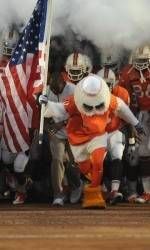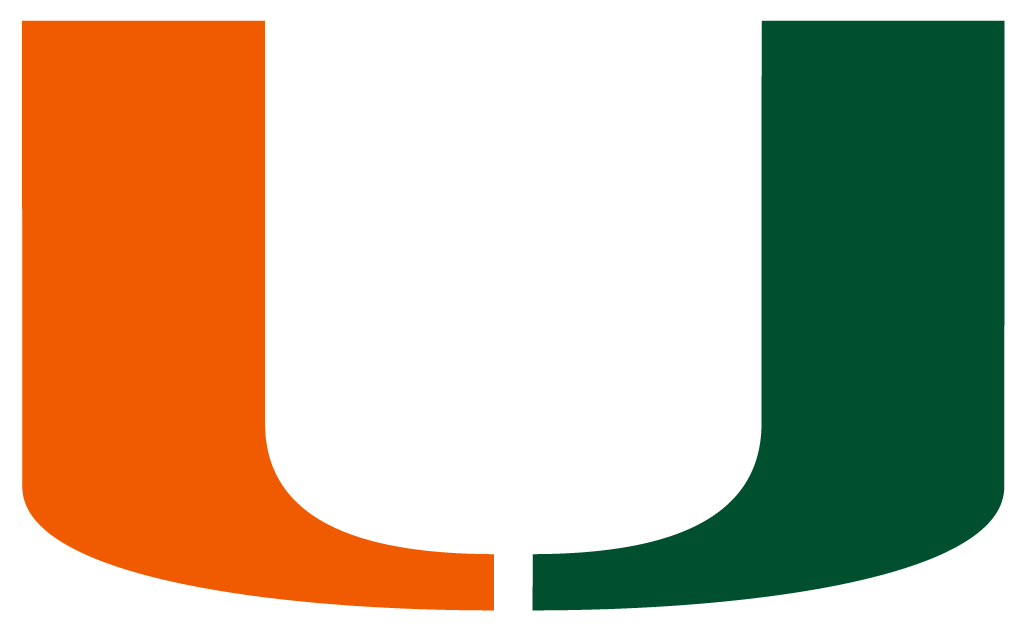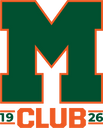
AP: Smoke 2nd Best Tradition in College Football
Oct. 16, 2010
Good luck charms, bands, banners, chants and cheerleaders. Look around a college football game and almost anything can qualify as a tradition.
The best ones though have some combination of history, originality and plain old coolness.
Here are the AP’s 12 best college football traditions:
___
1) HOWARD’S ROCK. A friend of Frank Howard’s gave the Hall of Fame coach the big rock back in the early 1960s and the story goes he used it as a door stop for a while before a Clemson booster club member placed it at the top of the hill behind the east zone the Tigers run down to enter the stadium . The first time they ran past it before a game in 1966, they beat Virginia. The next season they started rubbing it for luck before running down the hill and the Tigers have been doing it ever since.
2) MIAMI’S SMOKY ENTRANCE. The smoky entrance became a part of Miami football back in the 1950s when fire extinguishers were used to create the cloud. The effect stuck, and when the Hurricanes turned into the most dominant program in the college football in the 1980s, their sprint onto the field through the smoke suited the team perfectly. They took the field like a wrestler entering the ring and talked just about as much trash as anyone Vince McMahon ever employed.
3) SCRIPT OHIO. At Ohio State it’s simply called TBDBITL (The Best Damn Band in the Land), and it has been spelling out the script Ohio at football games since 1936. The big moment comes at the end when a sousaphone player dots the “i.” Honorary i-dotters are rare and include Bob Hope, Woody Hayes and Jack Nicklaus.
4) TIGER WALK. Two hours before kickoff, the Auburn Tigers hoof it to Jordan-Hare Stadium from Sewell Hall down Donahue Drive, with thousands of fans lining the street to wish them luck. It started in the early 1960s, and now similar walks are done by other teams.
5) YELL PRACTICE. Most schools have pep rallies the night before games. At Texas A&M, it’s yell practice. Yell Leaders are elected and use various hand signals that coincide with the different yells to guide the fans. Some yells praise. Some scorn. And at the end of their Friday night session, Aggies kiss their dates, also as practice for gameday. Every time A&M scores, Aggies are supposed to “mug down.”
6) USC SONG GIRLS. Not cheerleaders. Song Girls. The most famous cheer squad in college football was started in 1967 and are as synonymous with Southern California as Heisman Trophy-winning tailbacks. And the Song Girls never landed the Trojans on probation.
7) THE SOONER SCHOONER. When Oklahoma scores, matching white ponies named Boomer and Sooner take a victory lap pulling covered wagon dubbed the Sooner Schooner. It first appeared in 1964, became the school’s official mascot in 1980 and it famously drew a delay of game penalty in the 1985 Orange Bowl that helped cost the Sooners three points in a 28-17 loss to Washington.
8) MISSISSIPPI STATE COWBELLS. Davis Wade Stadium in Starkville, Miss., is far from the biggest stadium in the Southeastern Conference, but at times it can be the loudest when those cowbells start clanging. The tradition goes back to the 1940s and SEC opponents have been trying to get the bells banned for almost as long. The league finally implemented a rule prohibiting artificial noisemakers from games about 10 years ago, but the only cowbell that would get you into trouble at Wade Davis would be one still attached to a cow.
9) GO BLUE. The Bump Elliott years were not particularly good ones for the Wolverines, but he is credited with helping start one very cool tradition in 1962 when he allowed the Wolverines to take the field at the Big House running under a huge GO BLUE banner. It measures 40-feet long by 4-feet wide and the players touch it for luck as they pass by. Michigan’s defense clearly hasn’t been touching the banner enough lately.
10) CAL’S TIGHTWAD HILL. Officially it’s called Charter Hill and it lies on the east side of California Memorial Stadium. Golden Bears fans have been watching their team play for free there since the 1920s. In typical Berkeley fashion, visitors police themselves and are expected keep the place tidy. There is only one rule on tightwad hill: No red clothing. Rival Stanford wears red.
11) RAMBLING WRECK OF GEORGIA TECH. The first mention of a Rambling Wreck was back in the 1920s. It was what members of the school newspaper called the 1914 Ford driven by one of the deans. In 1961, the school made it official, buying a 1930 Ford Cabriolet Sport Coupe for $1,000 from a pilot in Atlanta who had it parked in front of his apartment building. Packed with cheerleaders, the shiny gold antique leads the Yellow Jackets on the field these days.
12) THE WORLD’S LARGEST DRUM. It takes about four band members to push around the carriage that holds Purdue’s Big Bass Drum. The exact measurements are a secret, but it’s about 10-feet tall and 4-feet wide. It debuted in 1921 and has been refurbished several times since.
Copyright 2010 The Associated Press.All rights reserved.This material may not be published,broadcast,rewritten or redistributed.
College






